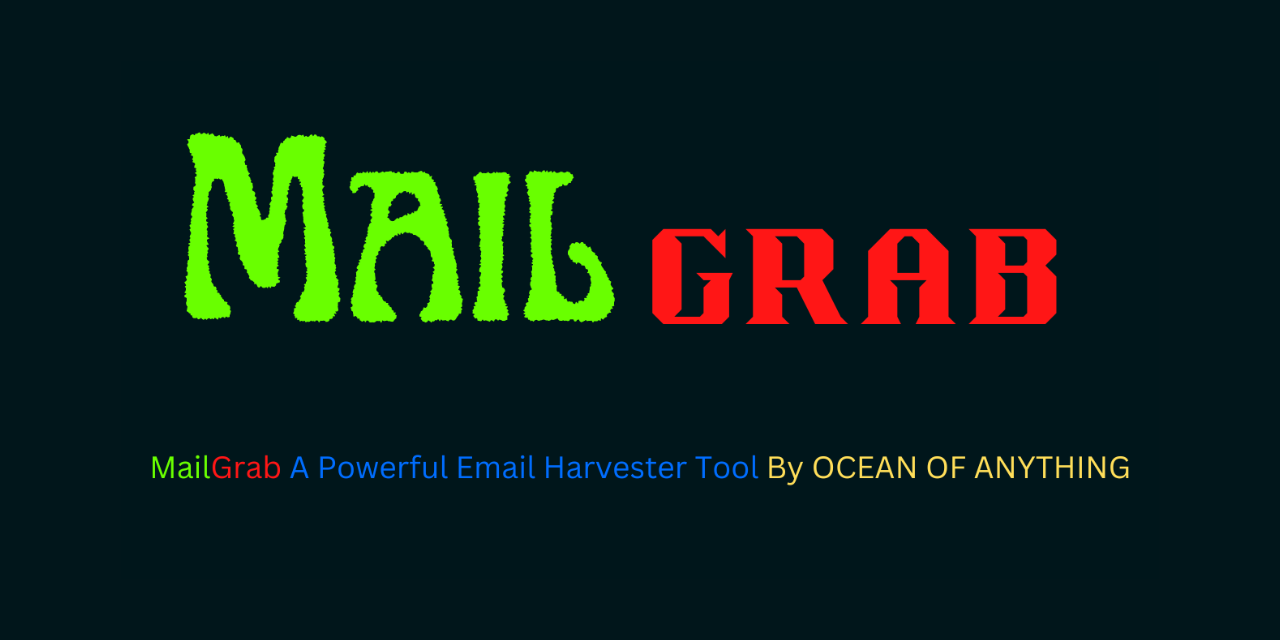MailGrab – The Ultimate Email Scraper That Does It All
MailGrab is an advanced Python-based email scraper that auto-discovers URLs, harvests bulk emails, and stores them automatically. Perfect for marketers, researchers, and developers.
MailGrab – The Ultimate Email Scraper That Does It All
Table of Contents
- MailGrab – The Ultimate Email Scraper That Does It All
- Table of Contents
- What is MailGrab?
- Why Email Scraping Matters Today
- Key Features of MailGrab
- Who Can Benefit from MailGrab?
- Supported Platforms
- Requirements Before Installation
- How to Install MailGrab
- Step-by-Step Python 3.9 Setup for Beginners
- How MailGrab Works Behind the Scenes
- Best Practices for Email Scraping
- Is It Legal to Use MailGrab?
- Security and Privacy Considerations
- Tips to Maximize Your Scraping Results
- MailGrab in Action – Real-World Use Cases
- Conclusion
- Frequently Asked Questions
What is MailGrab?
Have you ever needed to collect a bunch of email addresses from websites but didn’t want to manually copy and paste them one by one? Enter MailGrab, your new best friend in web scraping! Built using Python, MailGrab is a powerful, multi-platform tool that automatically finds and extracts email addresses from a list of URLs—and even digs into sub-URLs to make sure nothing’s missed.
Why Email Scraping Matters Today
Emails are digital currency. Whether you’re doing outreach, lead generation, market research, or building contact lists, having access to the right emails is crucial. MailGrab makes the process fast, automatic, and efficient.
Key Features of MailGrab
✅ Auto URL Discovery
MailGrab will crawl through sub-URLs too! If the main page links to blog posts or product pages, it digs in.
📩 Bulk Email Harvesting
Give it a huge list of URLs—it’ll handle them all without throttling.
💾 Automatic Data Storage
Results are stored in:
_emails.txt: All collected email addresses_scrappedUrls.txt: All scanned URLs
Who Can Benefit from MailGrab?
- Digital marketers expanding email lists
- Researchers collecting contact info
- Developers learning or building scrapers
- Students practicing automation
- Startups doing outreach
Supported Platforms
MailGrab runs on:
- ✅ Windows
- ✅ Linux
- ✅ macOS
Requirements Before Installation
- Python 3.9 (specifically 3.9.0)
- Internet connection
- pip3 installed
How to Install MailGrab
1
2
git clone https://github.com/oceanofanything/MailGrab
cd MailGrab
🪟 Windows
1
install.bat
Or manually:
1
python -u install.py
🐧 Linux
1
sudo python -u install.py
🍏 macOS
- Download Python 3.9: Python 3.9 Download
- Install it
- Run:
1
sudo python -u install.py
Step-by-Step Python 3.9 Setup for Beginners
macOS
- Download and run Python 3.9
.pkginstaller - Add Python to PATH if needed
Ubuntu/Linux
1
2
3
4
5
sudo apt install software-properties-common
sudo add-apt-repository ppa:deadsnakes/ppa
sudo apt update
sudo apt install python3.9
python3.9 --version
How MailGrab Works Behind the Scenes
MailGrab:
- Accepts a list of URLs
- Parses HTML and finds email patterns
- Recursively visits sub-links
- Stores data into simple
.txtfiles
Best Practices for Email Scraping
- Scrape only public pages
- Avoid login-required areas
- Respect
robots.txt - Use throttling to avoid getting blocked
Is It Legal to Use MailGrab?
Scraping public data is legal in most cases—but how you use that data must comply with laws like GDPR and CAN-SPAM.
Security and Privacy Considerations
MailGrab is open-source and runs locally. No data is sent anywhere. You’re in control.
Tips to Maximize Your Scraping Results
- Use proxies if needed
- Focus on high-content domains
- Validate emails after scraping
- Filter duplicates with Python
MailGrab in Action – Real-World Use Cases
- 💼 Marketers scraping leads
- 🎓 Students extracting faculty contacts
- 🧪 Researchers building databases
- 🏢 Startups building contact networks
Conclusion
If you’re tired of the manual grind of email collection, MailGrab is your shortcut to automation. Whether you’re doing research, marketing, or development, MailGrab’s ease of use and power make it a must-have.
Frequently Asked Questions
Q1: Can MailGrab extract emails from PDFs or docs? No. It’s only for web pages.
Q2: What’s the max number of URLs? No fixed limit. Break large lists into chunks for best results.
Q3: Is MailGrab safe? Yes. It runs locally and doesn’t share your data.
Q4: Mobile support? Not at this time.
Q5: Can I contribute to MailGrab? Yes! Fork it on GitHub and submit your pull requests.
